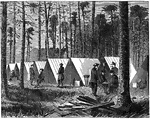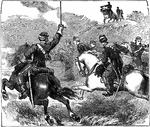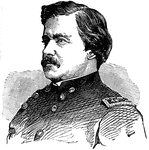
Alexander McDowell McCook
Alexander McDowell McCook (April 22, 1831 – June 12, 1903) was a career United States Army officer…
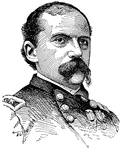
Edward M. McCook
Edward Moody McCook (June 15. 1833 – September 9, 1909) was a lawyer, politician, distinguished Union…
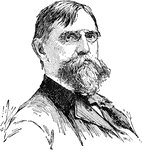
Benjamin Franklin Wade
Benjamin Franklin "Bluff" Wade (October 27, 1800 – March 2, 1878) was a U.S. lawyer and United States…
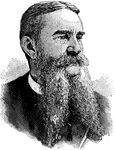
John Grimes Walker
John Grimes Walker (20 March 1835 – 16 September 1907) was an admiral in the United States Navy…
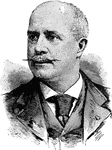
George Edwin Waring
George Edwin Waring was born in Poundridge, NY, July 4, 1833. He was agricultural engineer of Central…
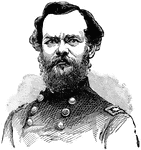
James Birdseye McPherson
James Birdseye McPherson (November 14, 1828 – July 22, 1864) was a career United States Army officer…
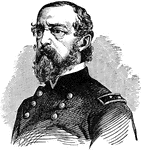
George Gordon Meade
George Gordon Meade (December 31, 1815 – November 6, 1872) was a career United States Army officer…

Thomas Francis Meagher
Thomas Francis Meagher (August 3, 1823 – July 1, 1867) was an Irish nationalist, a Union Army…

General Lyon's March to Booneville
The Battle of Booneville was a skirmish of the American Civil War, occurring on June 17, 1861, in Cooper…
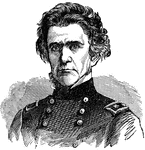
Ormsby McKnight Mitchel
Ormbsy MacKnight (or McKnight) Mitchel (July 20, 1805 – October 30, 1862) was an American astronomer…

Opening of the Battle of Mobile Bay
The Battle of Mobile Bay was a naval battle fought on August 5, 1864, during the American Civil War.

Capture of Fort Morgan, Mobile Bay
The Siege of Fort Morgan occurred during the American Civil War as part of the battle for Mobile Bay…

Fort Wayne
Fort Wayne was established 1839 in Indian Territory by Lt. Col. R.B. Mason of the 1st Dragoons. Named…
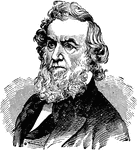
Gideon Welles
Gideon Welles (July 1, 1802 – February 11, 1878) was the United States Secretary of the Navy from…
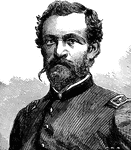
James Harrison Wilson
James Harrison Wilson (September 2, 1837 – February 23, 1925) was a United States Army topographic…
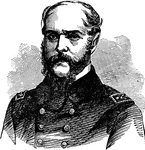
John Ancrum Winslow
Rear Admiral John Ancrum Winslow (1811 – 29 September 1873) was an officer in the United States…
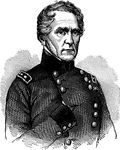
John Ellis Wool
John Ellis Wool (February 20, 1784 – November 10, 1869) was an officer in the United States Army…

John Lorimer Worden
John Lorimer Worden (12 March 1818 – 19 October 1897) was a U.S. Admiral who served in the American…

John Pope
John Pope (March 16, 1822 – September 23, 1892) was a career United States Army officer and Union…

Fitz John Porter
Fitz John Porter (August 31, 1822 – May 21, 1901) (sometimes written FitzJohn Porter) was a career…
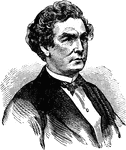
Richard Yates
Richard Yates (January 18, 1818 – November 27, 1873) was governor of Illinois during the American…

Breach in Fort Pulaski
Fort Pulaski was prepared for a possible infantry attack. However, Fort Pulaski never endured a direct…

Gunboats Ascending the Yazoo River
The Yazoo River was of major importance during the American Civil War. The first electrically detonated…

Seal of Illinois
The Seal of the State of Illinois, 1818. The seal shows the bald eagle on a rock carrying a shield.…

Seal of Louisiana
The seal of the state of Louisiana. The seal shows a pelican in her piety, feeding her young with her…
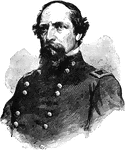
James Brewerton Ricketts
James Brewerton Ricketts (June 21, 1817 – September 22, 1887) was a career officer in the United…
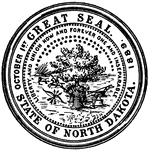
Seal of North Dakota
The Great Seal of the State of North Dakota. The seal depicts a tree, wheat, a plow, and a Native American…

Seal of Washington
The Seal of the State of Washington, 1889. The seal contains a portrait of George Washington and the…

Ellsworth Zouave
Zouave was the title given to certain infantry regiments in the French army, normally serving in French…
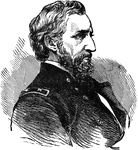
William Starke Rosecrans
William Starke Rosecrans (September 6, 1819 – March 11, 1898) was an inventor, coal-oil company…
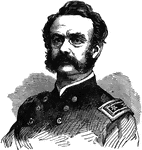
Lovell Harrison Rousseau
Lovell Harrison Rousseau (August 4, 1818 – January 7, 1869) was a general in the United States…
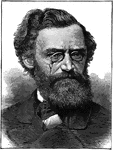
Carl Schurz
Carl Schurz (March 2, 1829 – May 14, 1906) was a German revolutionary, American statesman and…
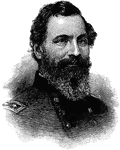
General John Sedgwick
John Sedgwick (September 13, 1813 – May 9, 1864) was a teacher, a career military officer, and a Union…
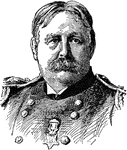
William Rufus Shafter
William Rufus Shafter (October 16, 1835 – November 12, 1906) was a Union Army officer during the…

Sherman and His Generals
William Tecumseh Sherman served as a General in the Union Army during the American Civil War (1861–65).…
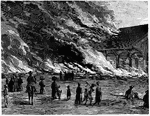
Sherman's Troops Burning a Railroad Station
William Tecumseh Sherman served as a General in the Union Army during the American Civil War. Here his…
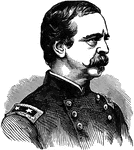
Daniel Edgar Sickles
Daniel Edgar Sickles (October 20, 1819 – May 3, 1914) was a colorful and controversial American…
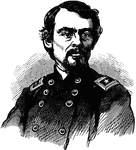
Franz Sigel
Franz Sigel (November 18, 1824 – August 21, 1902) was a German military officer and immigrant to the…
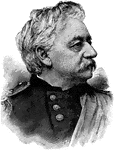
Henry Warner Slocum
Henry Warner Slocum (September 24, 1827 – April 14, 1894), was a Union general during the American…
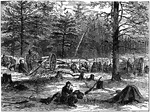
Scene of Sedgwick's Death
John Sedgwick (September 13, 1813 – May 9, 1864) was a teacher, a career military officer, and…

Bloody Angle of Spotsylvania
The angle between the Union II and VI Corps became known as the "Bloody Angle of Spotsylvania", where…
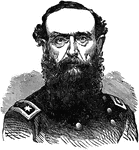
Frederick Steele
Frederick Steele (January 14, 1819 – January 19, 1868) was a career military officer in the United…
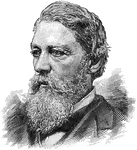
General George Stoneman
George Stoneman, Jr. (August 22, 1822 – September 5, 1894) was a career United States Army officer,…
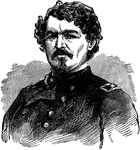
Samuel Davis Sturgis
Samuel Davis Sturgis (June 11, 1822 – September 28, 1889) was an American military officer who…
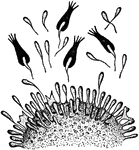
Cytolysis, Stage 2
"Ehrlich's diagrams illustrating the mechanism of immunity and cytolysis. The figures in black indicate…

Hoof of a Horse
Solar aspect of the hoof. Labels: a, bars; b, solar border of wall; c, line of union between wall and…
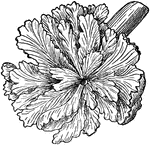
Wood Rose
"Wood-rose, a remarkable vegetable excrescence, resembling a flower with radiating corrugated petals…
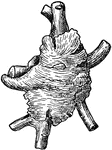
Wood Rose
"Wood-rose, a remarkable vegetable excrescence, resembling a flower with radiating corrugated petals…

Thomas Cranmer
Thomas Cranmer (2 July 1489 – 21 March 1556) was a leader of the English Reformation and Archbishop…

General Philip Henry Sheridan
(1831-1888) Philip Sheridan was a United States Army officer and Union General in the Civil War.

Ulysses S. Grant
Ulysses S. Grant, born Hiram Ulysses Grant (April 27, 1822 – July 23, 1885), was an American general…

General Sherman
William Tecumseh Sherman (February 8, 1820 – February 14, 1891) was an American soldier, businessman,…

George McClellan
George Brinton McClellan (December 3, 1826 – October 29, 1885) was a major general during the…
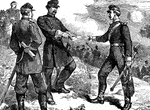
George McClellan at Battle of Antietam
George Brinton McClellan (December 3, 1826 – October 29, 1885) was a major general during the…

Kearny Cross
The Kearny Cross was a military decoration of the United States Army, which was first established in…
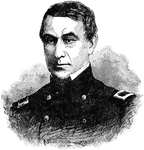
Major Robert Anderson
Robert Anderson (1805 - 1871) was a Union Army officer in the American Civil War. He is most known for…

Captain Knott V. Martin's Pig
It is four o'clock in the afternoon when a messenger rides up to the house of Captain Knott V. Martin.…
